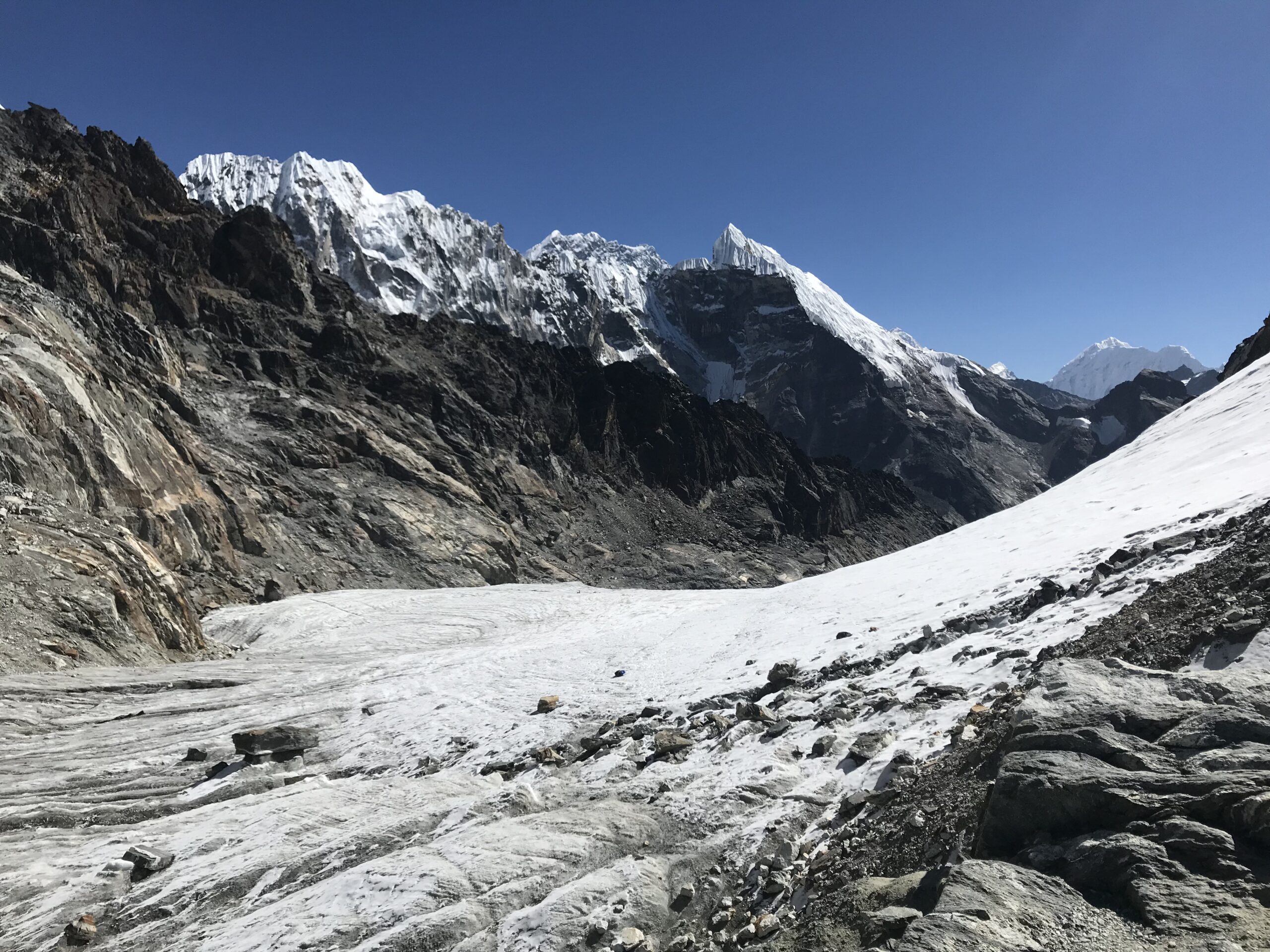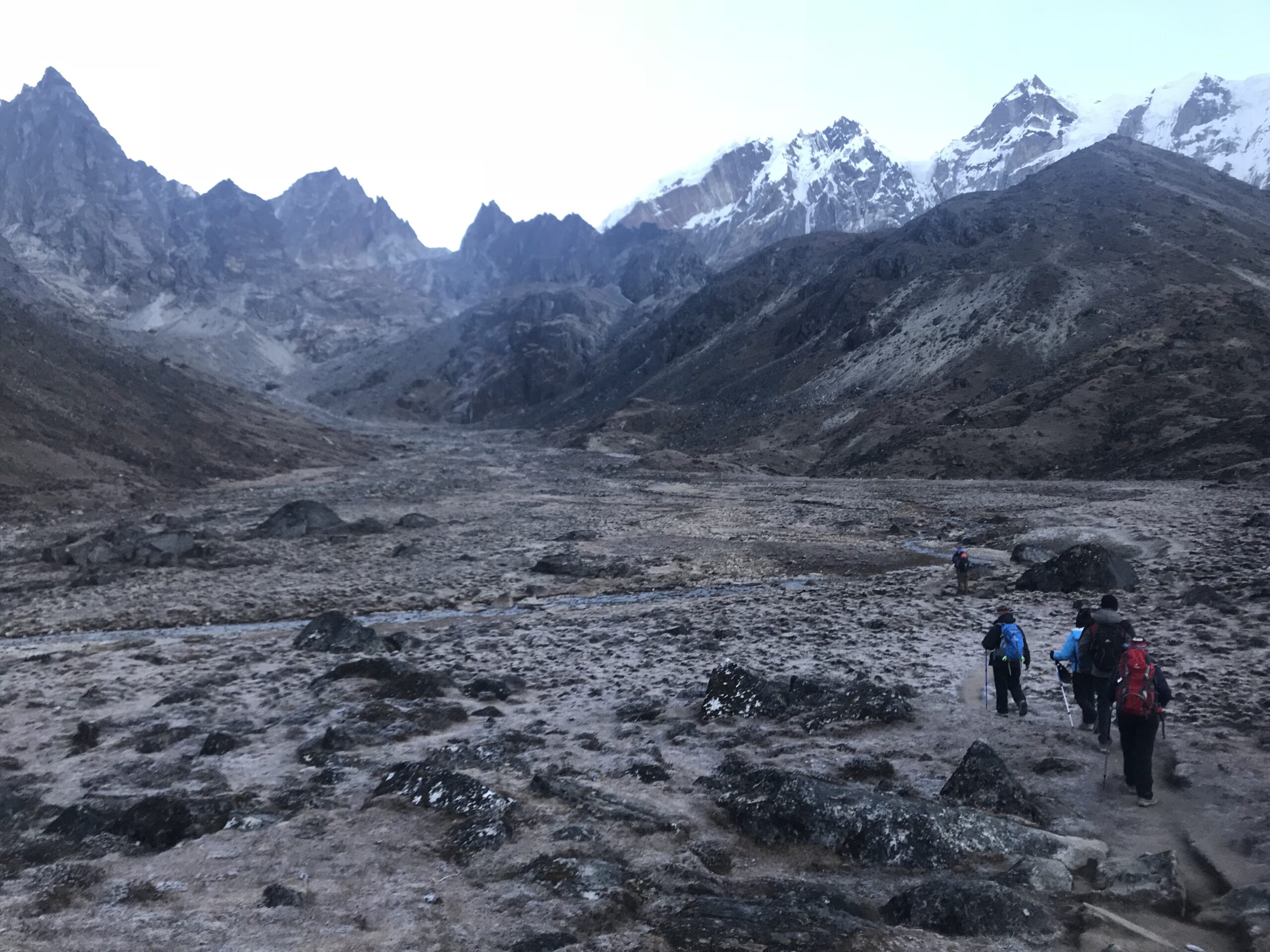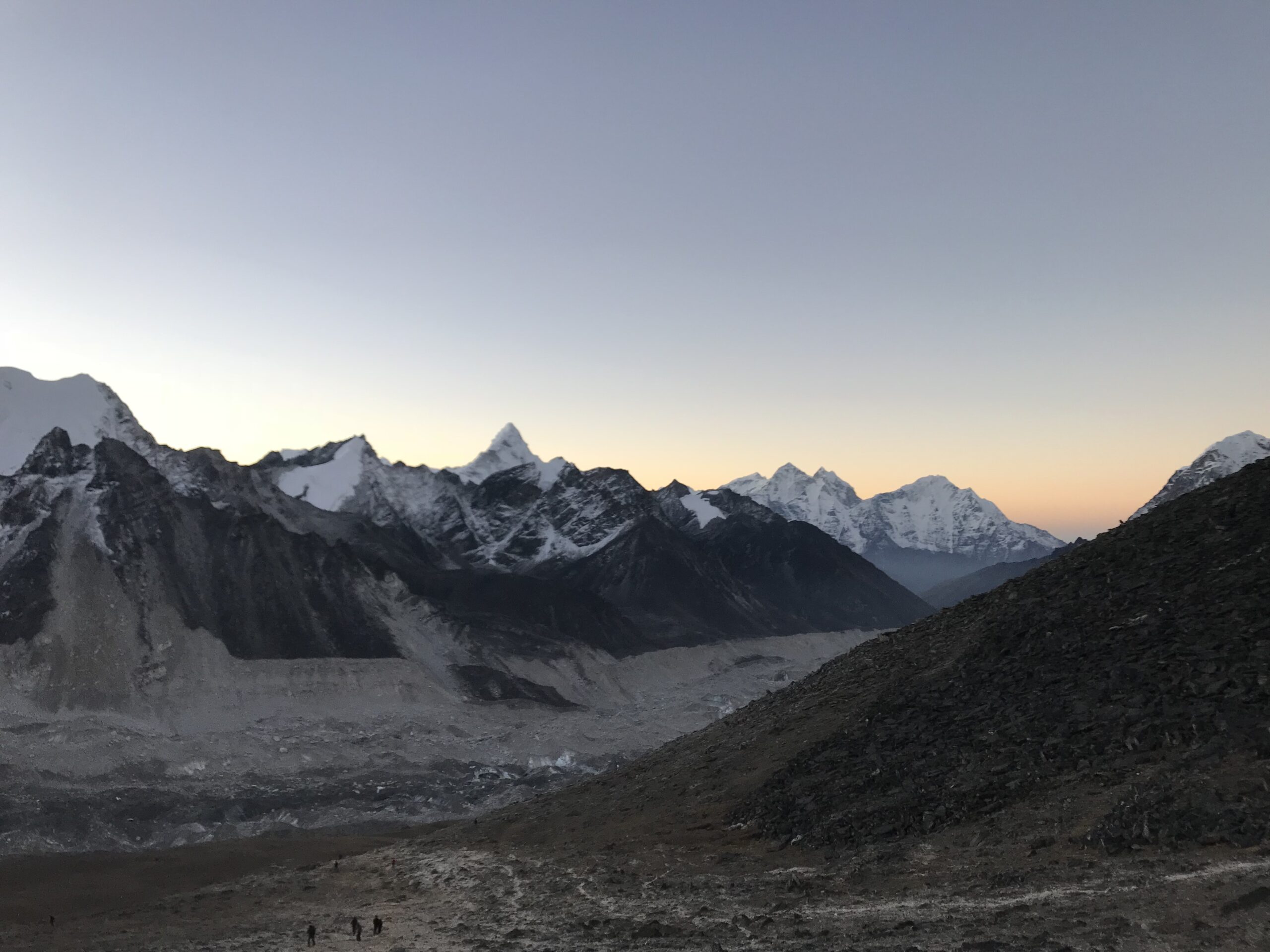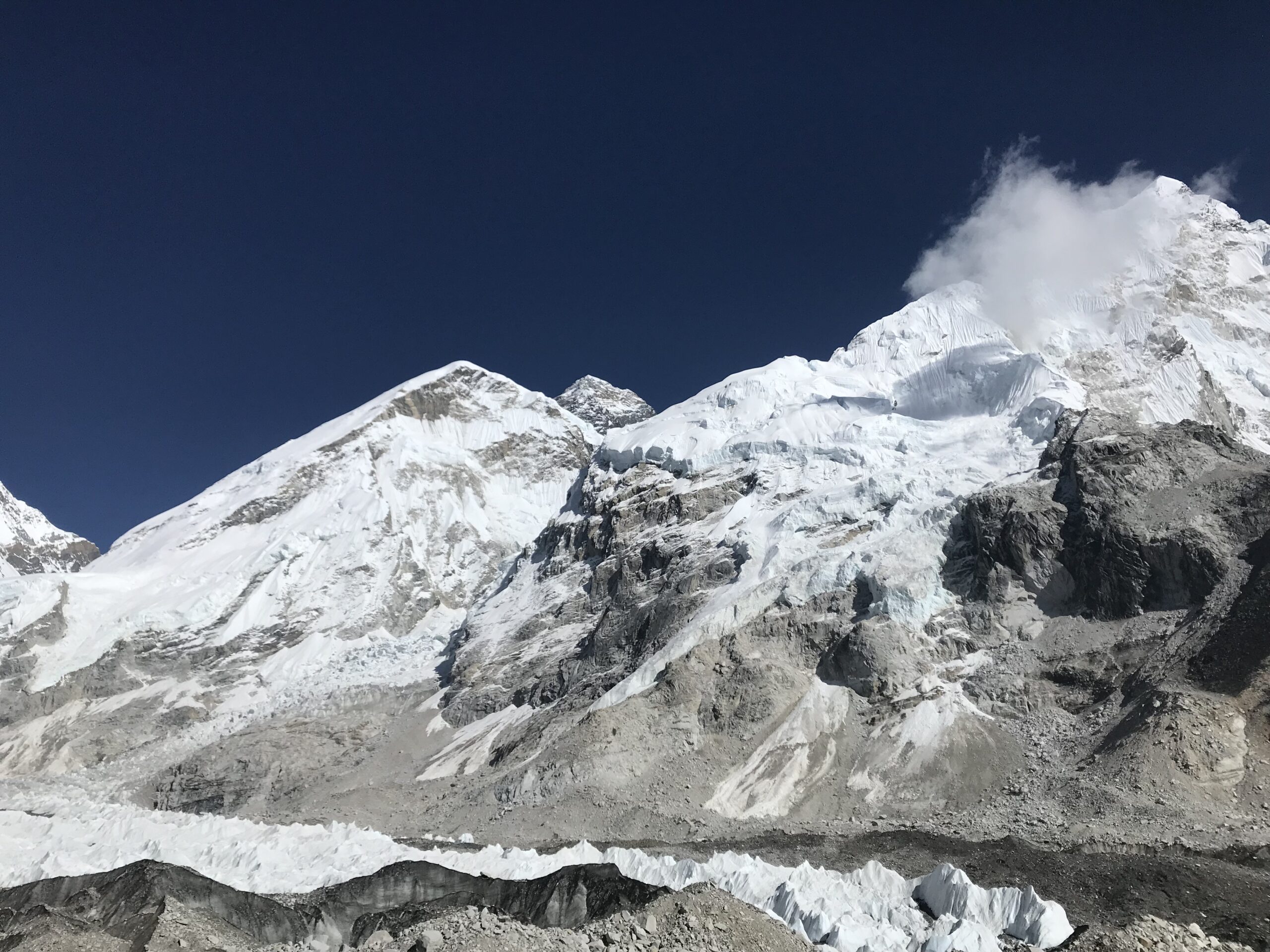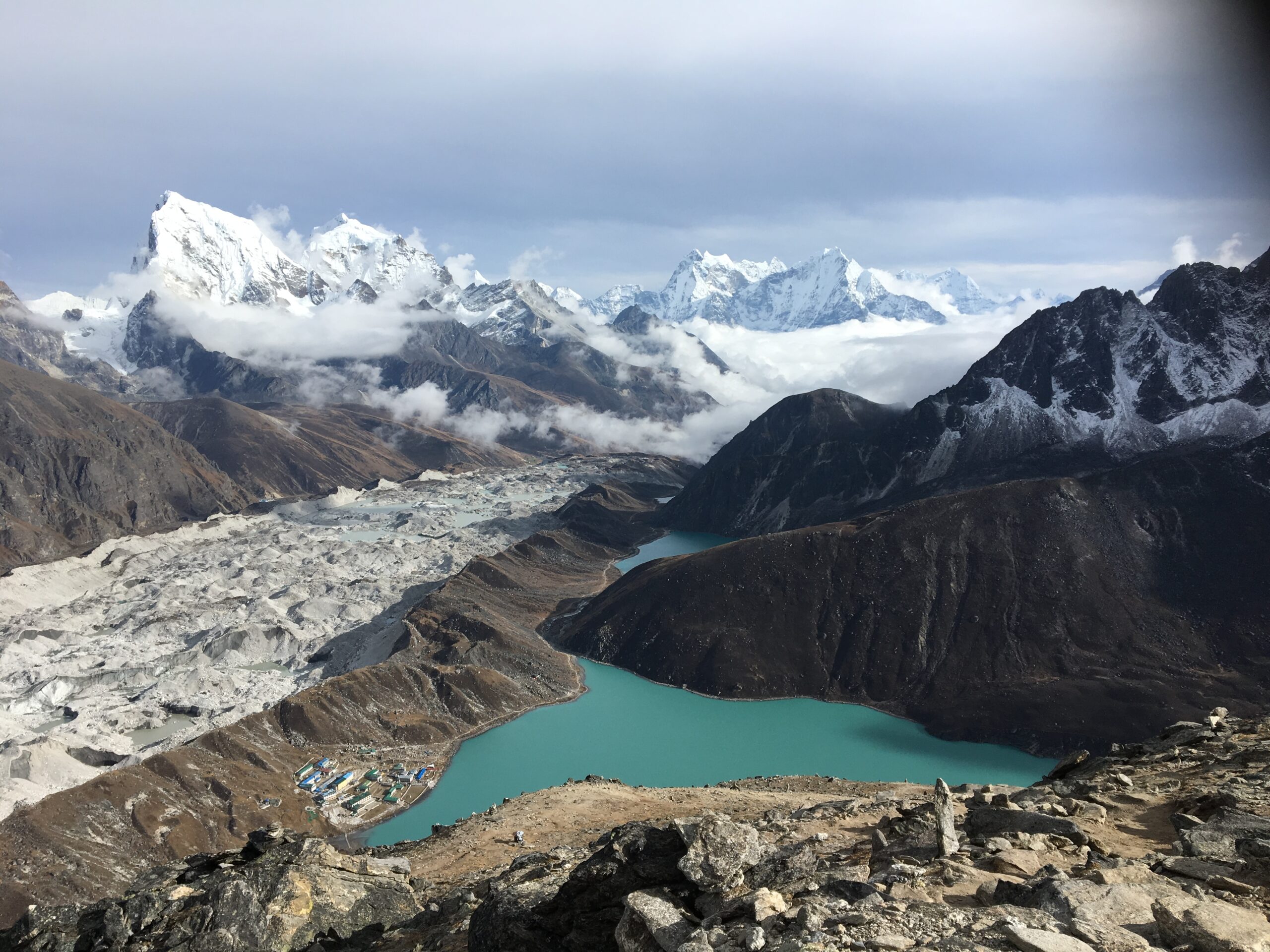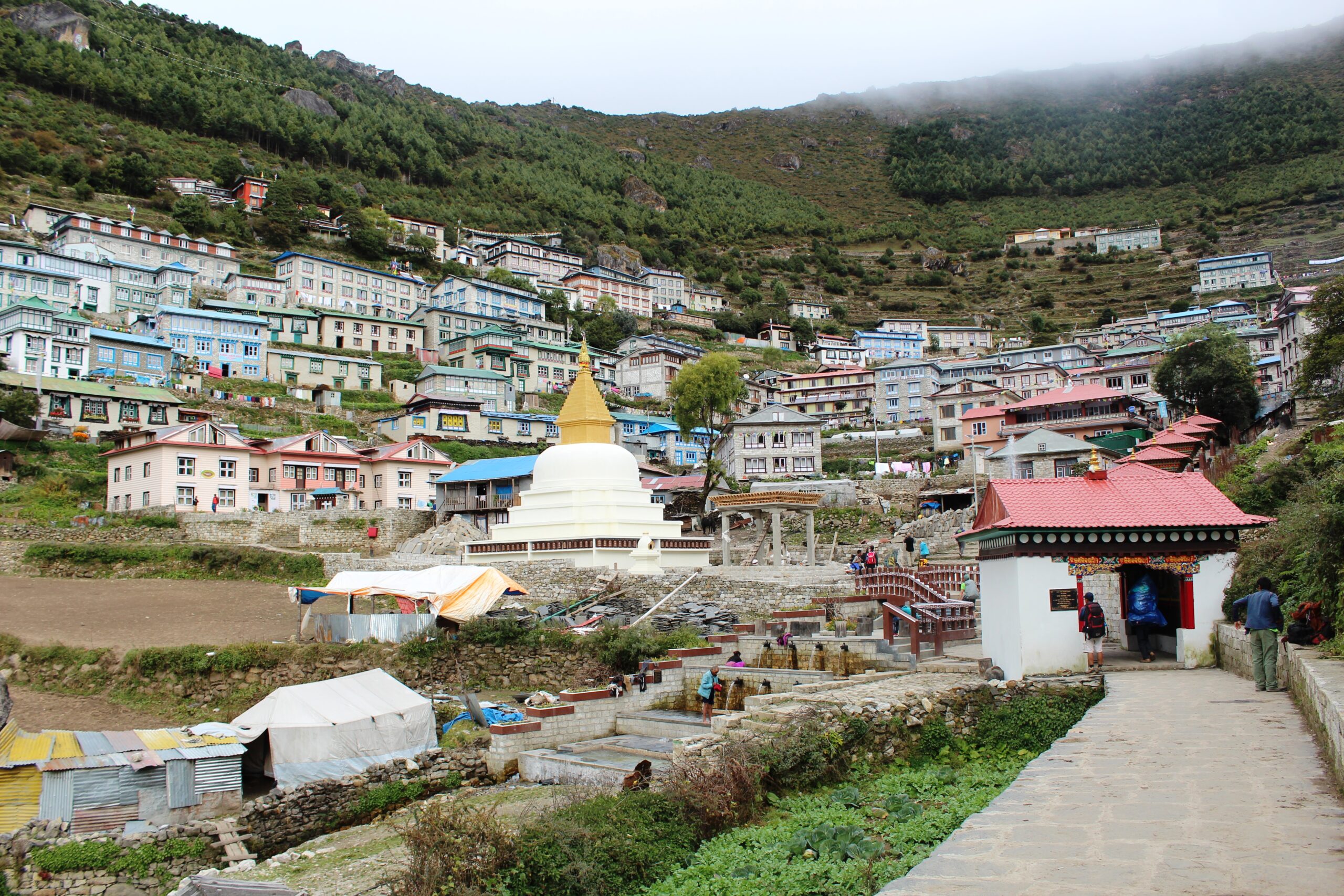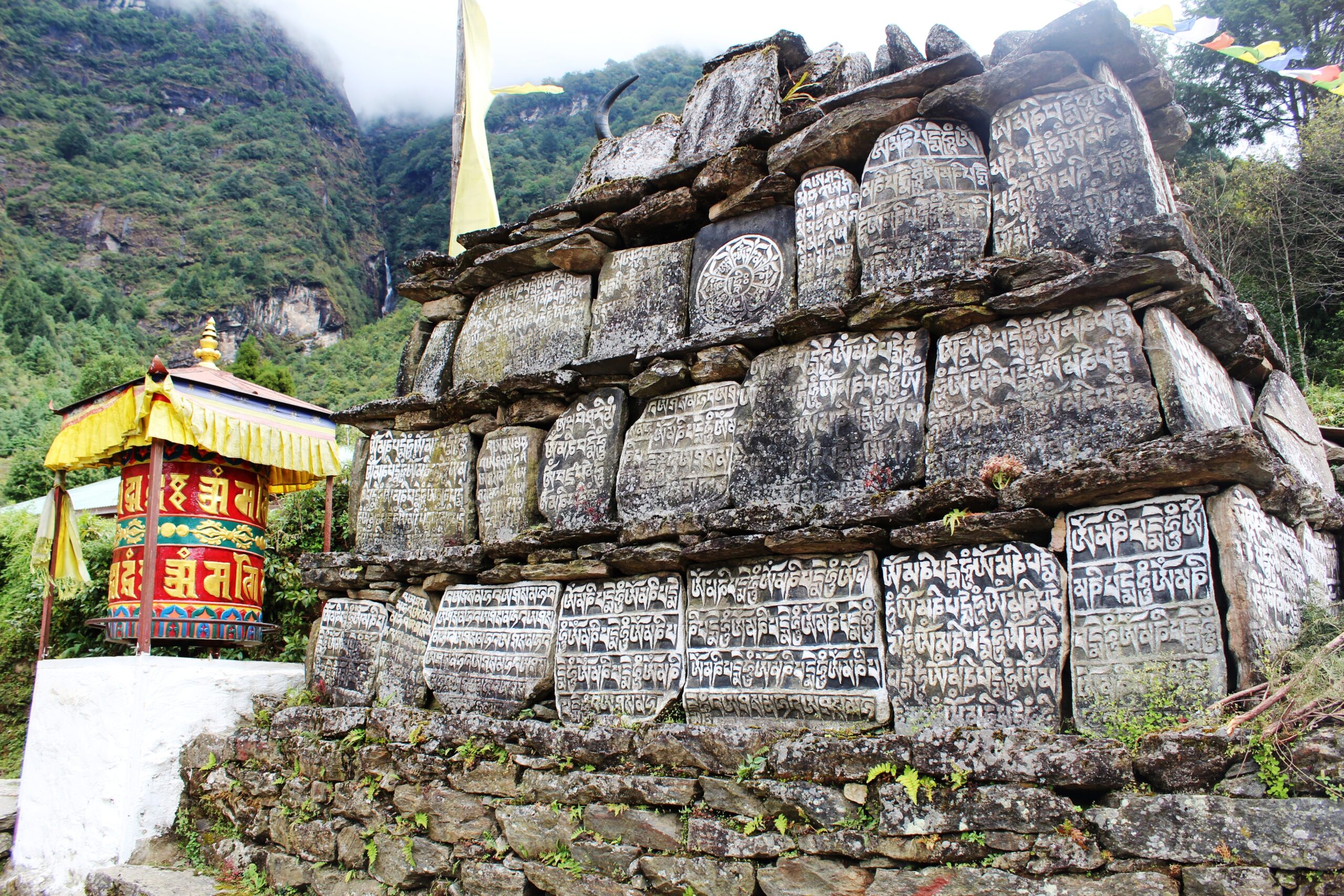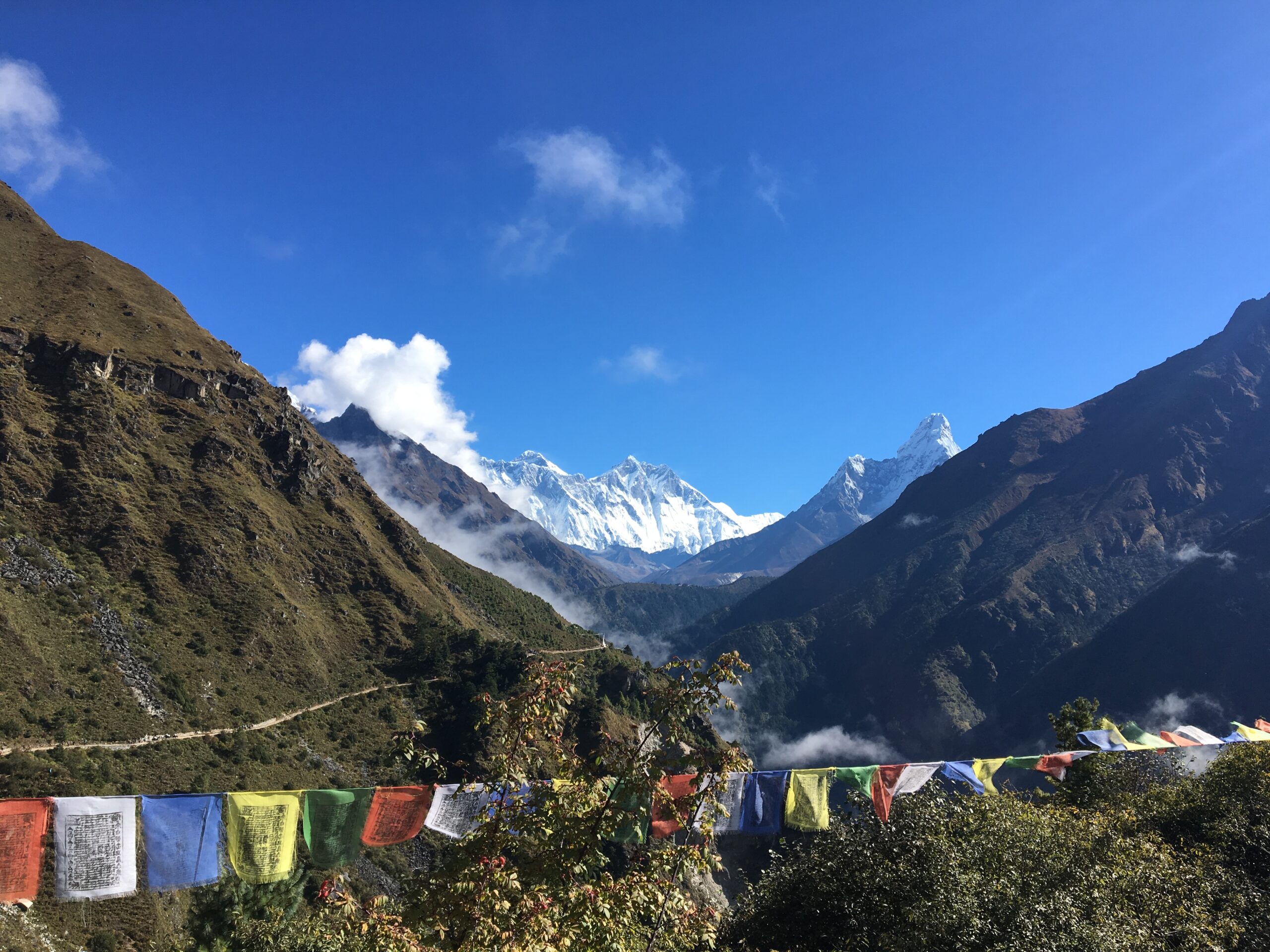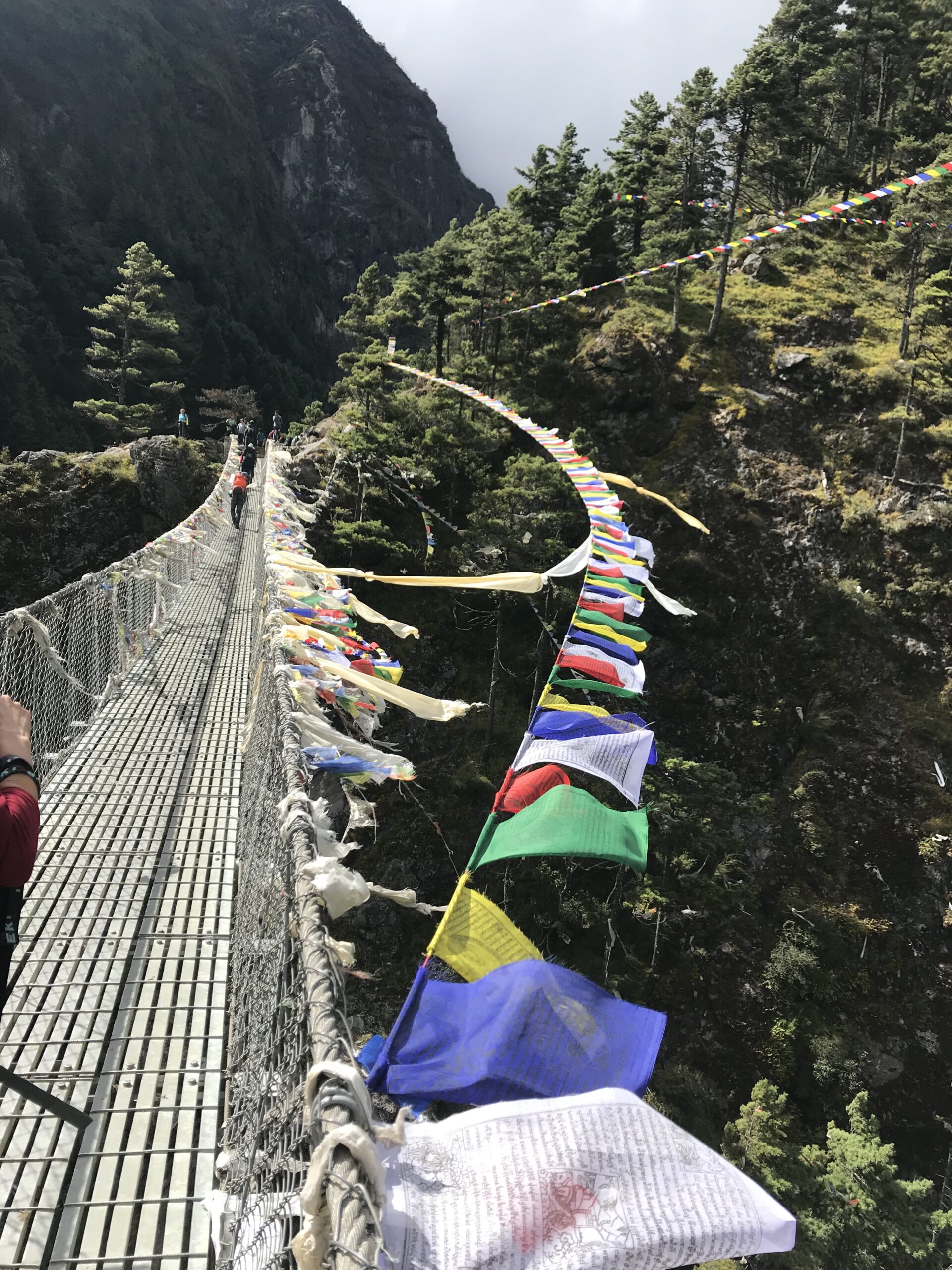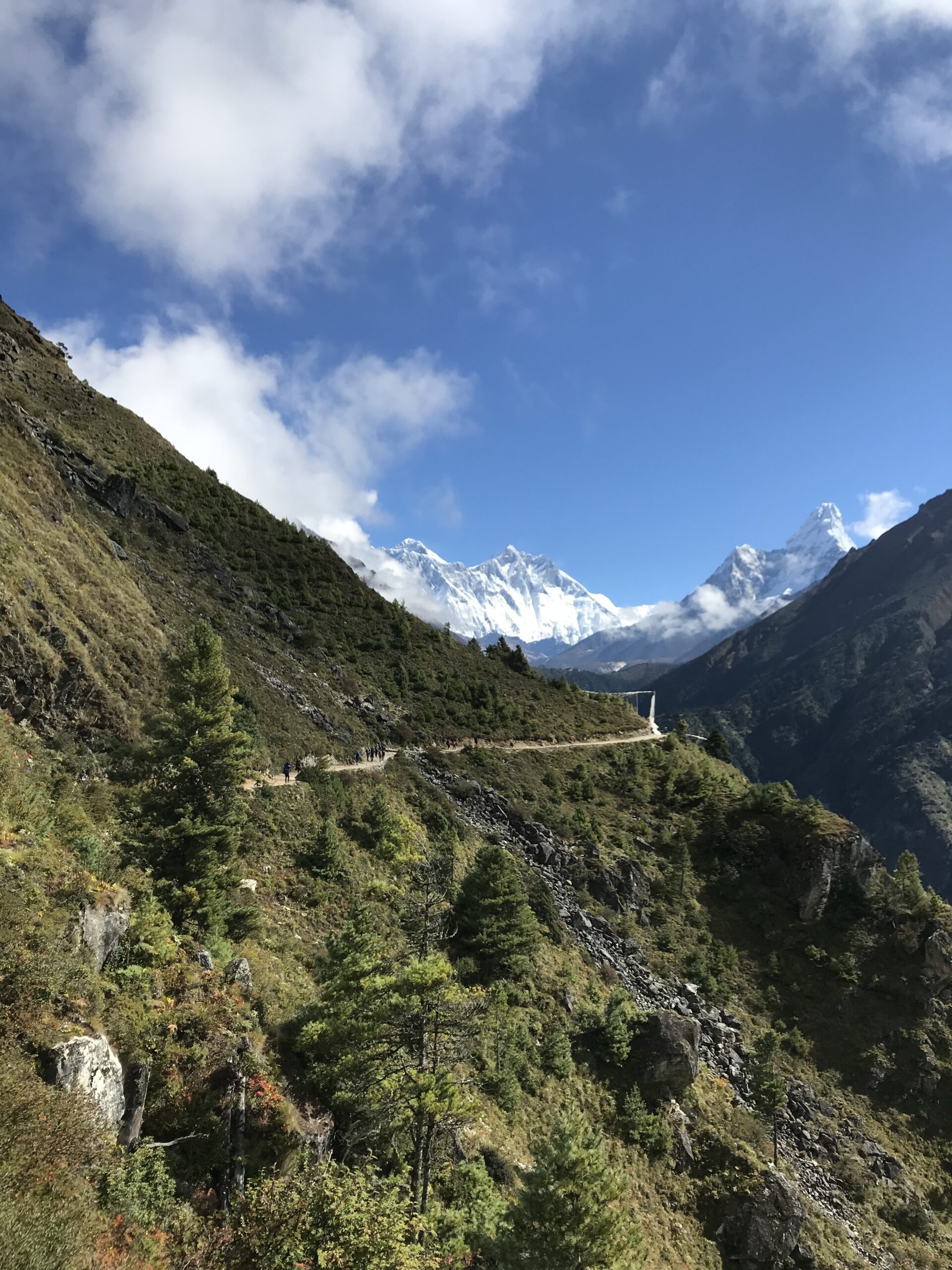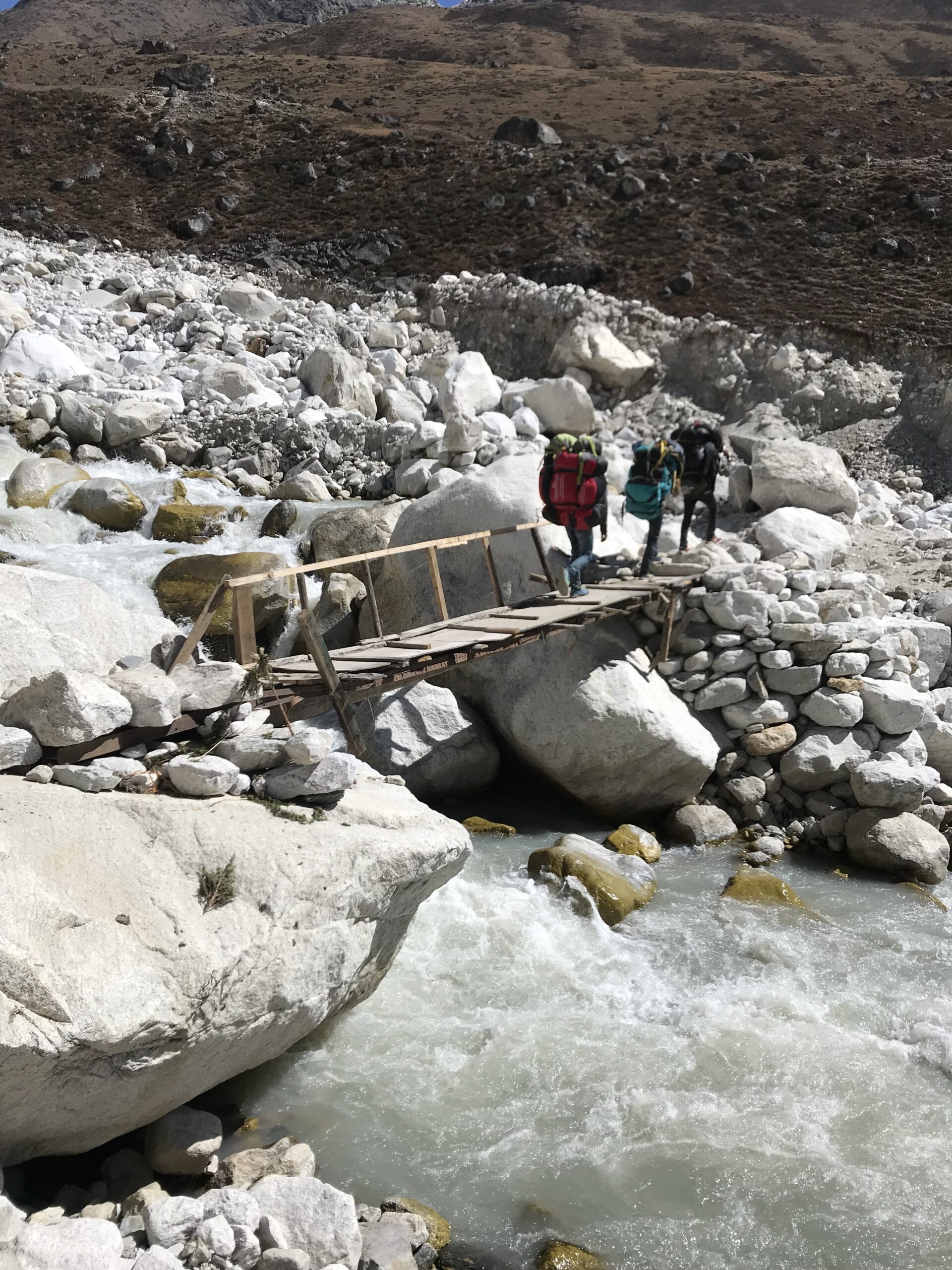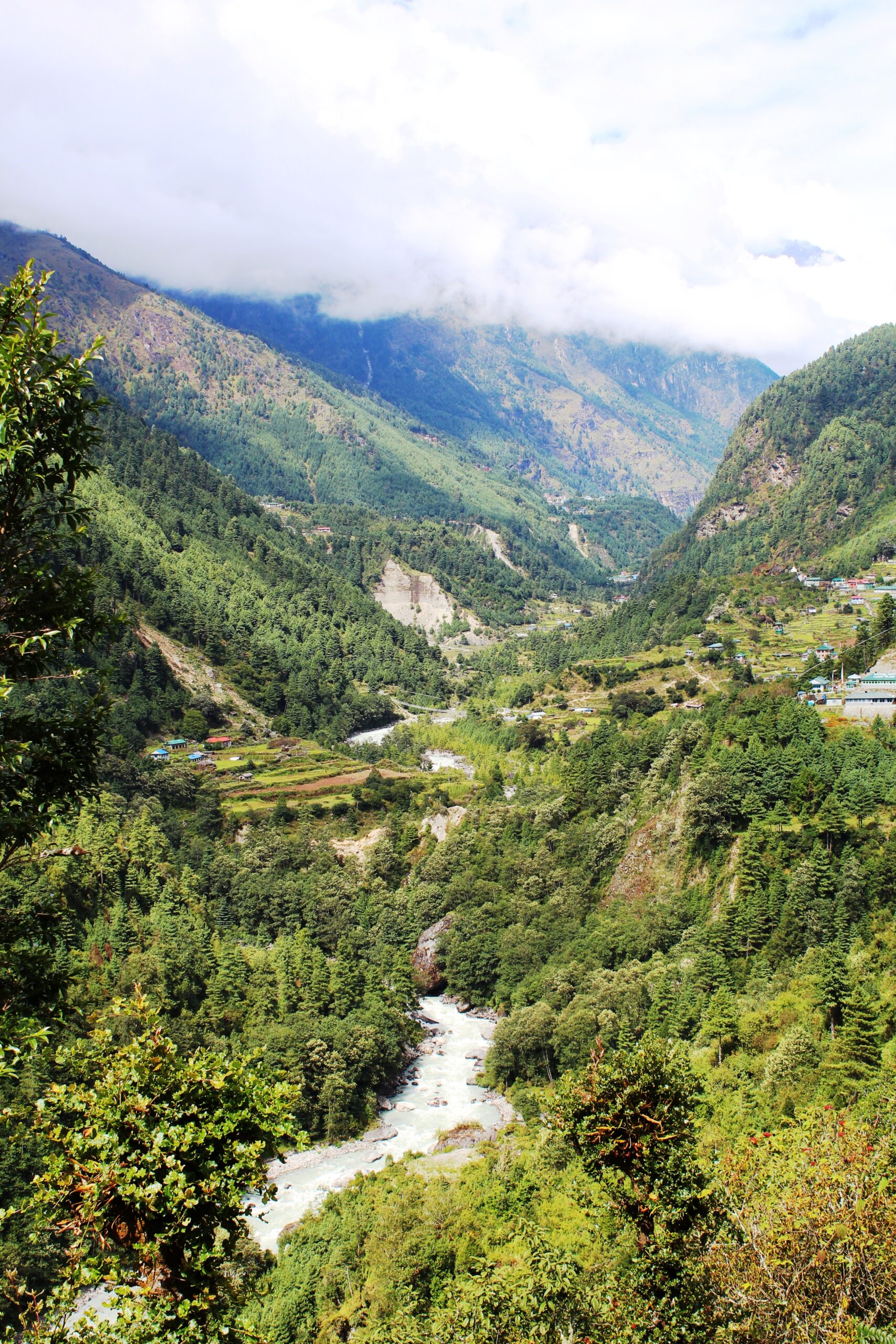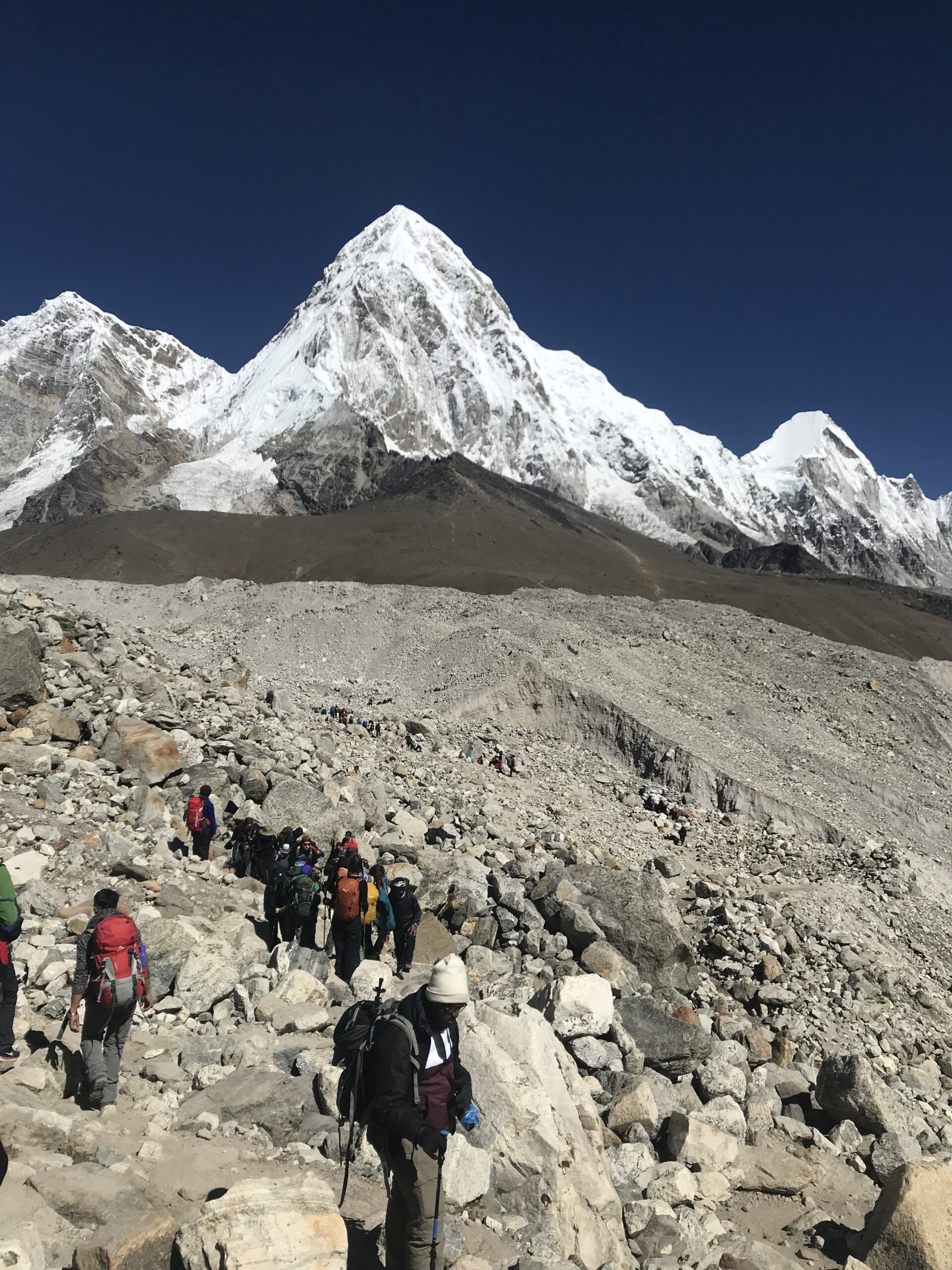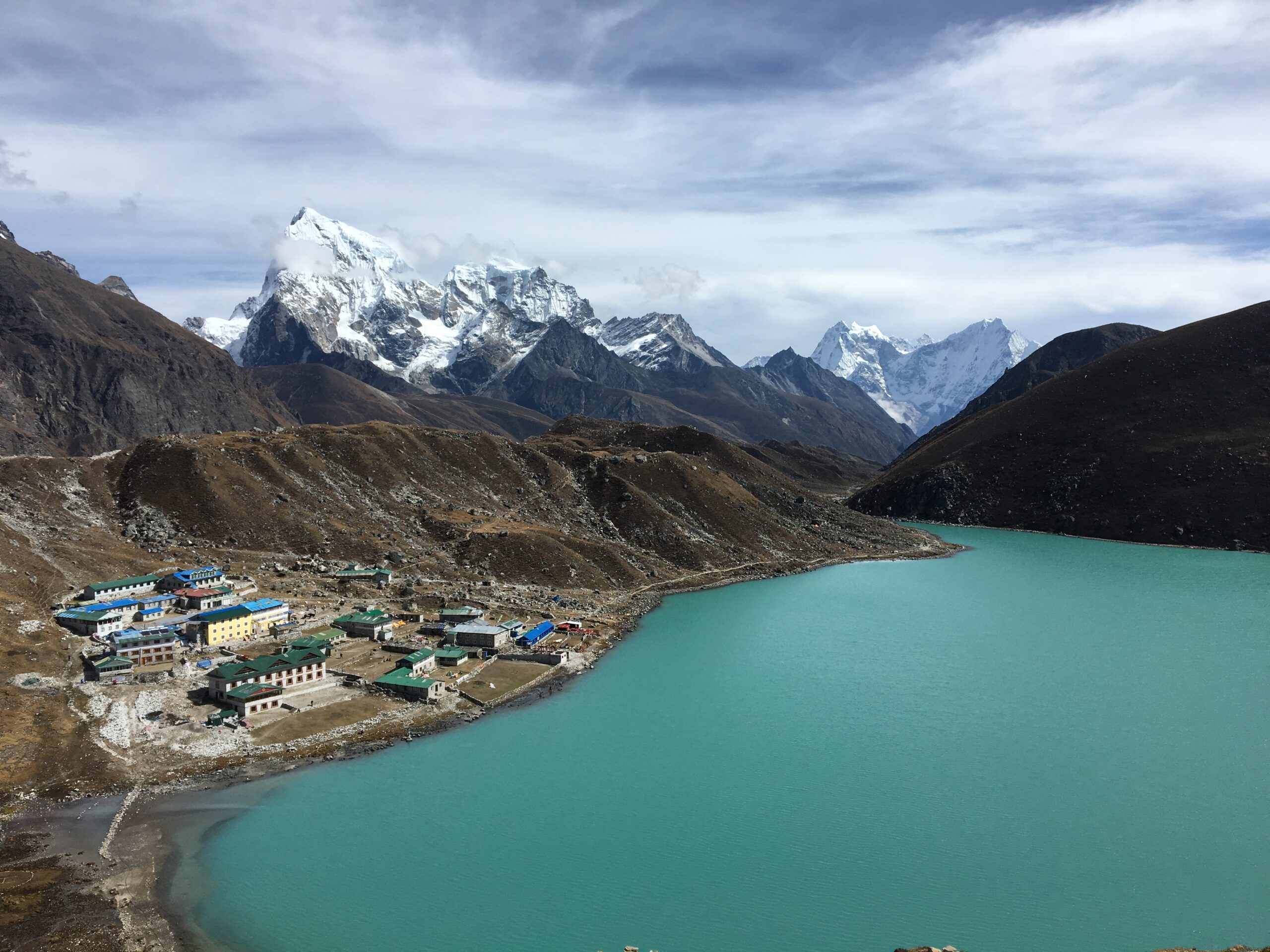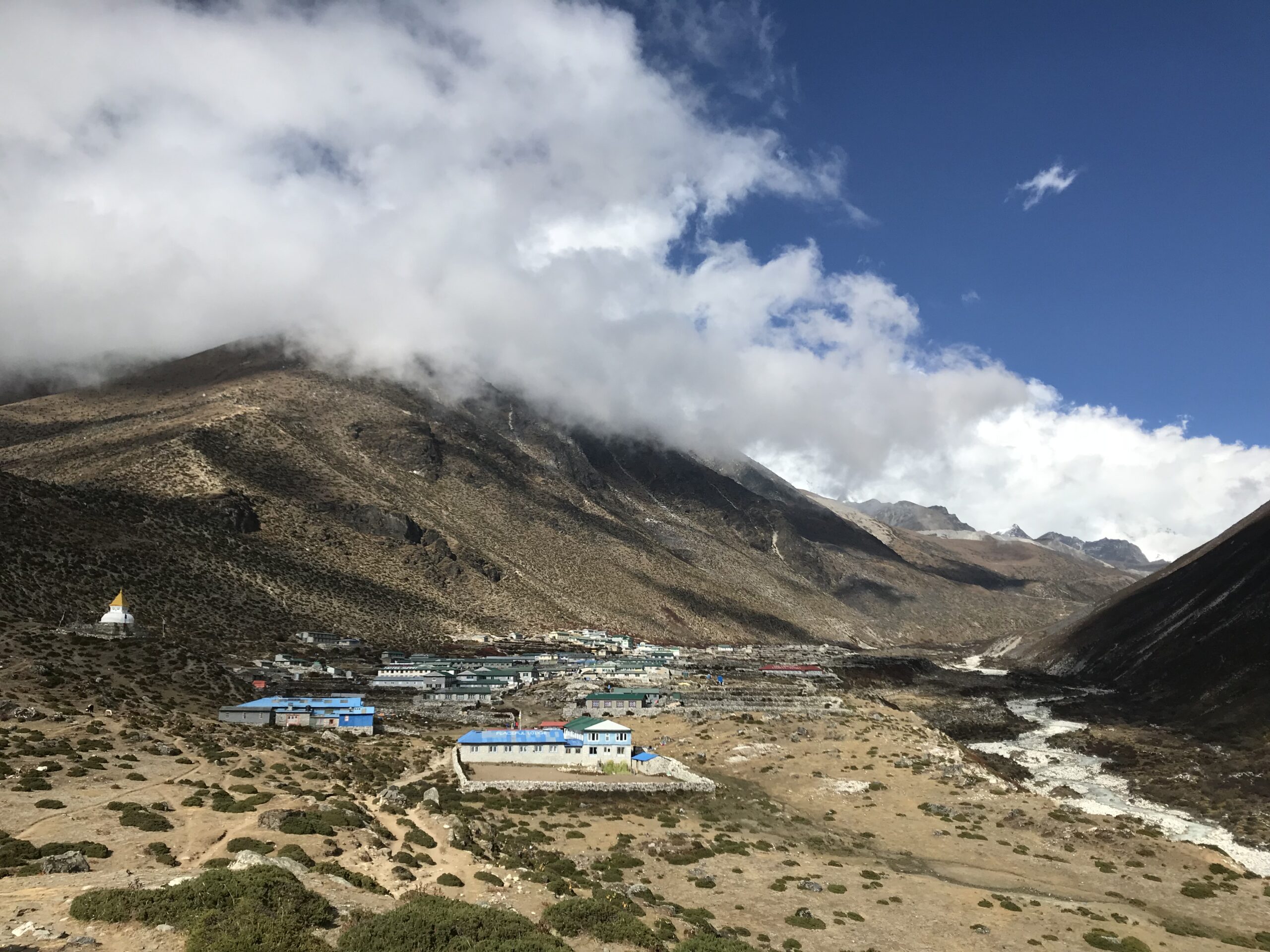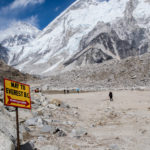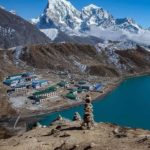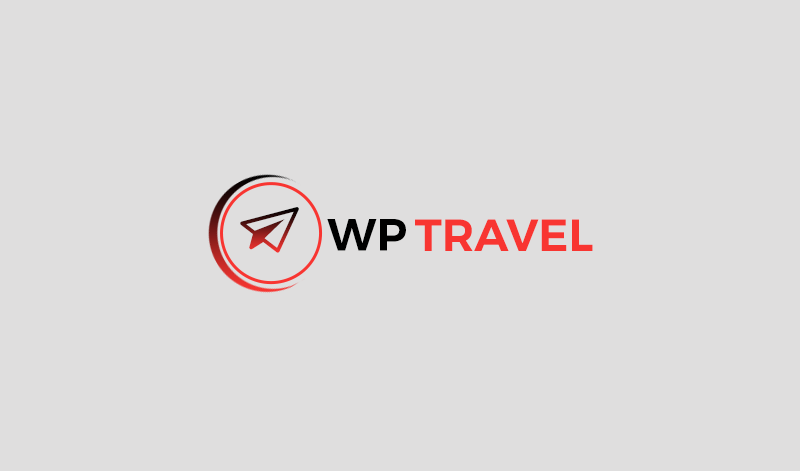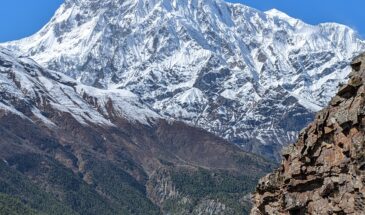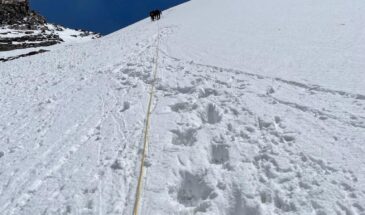- Trek Overview
- Itinerary
- Inclusions / Exclusions
- Gallery
- FAQ
How would you like to trek to the base camp of the highest peak in the world!
To be up close to the mighty Sagarmatha (Everest).
To trek inside the highly coveted Sagarmatha national park.
To see one of the most beautiful glacial lakes (Gokyo lake).
To see the sun rise and set on one of the most beautiful peaks in the world (Ama Dablam).
To be welcomed and hosted by the beautiful sherpa tribe (the everest folk).
All this and much more, all in one trek.
About the area
On this trek, you trek through the Khumbu region (also known as the Everest Region). It lies in northeast Nepal. You will find Sherpa settlement here. The Khumbu region includes the Sagarmatha National Park. It includes town of Namche Bazar, and villages of Thame, Khumjung, Pangboche, among others.
Expected Weather
- Chances of Rain/ Hail – Mild drizzles
- Temperatures- Afternoon upto 20 degrees (May), Nights around zero degrees (May)
- Day 1: Arrive in Kathmandu.
Overnight stay in Hotel.
Preferable arrival time before 12 pm.
Gear check by our guides in the afternoon.
Market visit for any last minute gear shopping.
Evening Heritage walk to Pattan square to get know the rich cultural heritage of Kathmandu followed by a visit to some must try food joints!
Retire early (9 pm) - Day 2: Early morning Drive from Kathmandu to Ramechaap
Time: 4 hours
Flight from Ramechaap to Lukla (2,850m/9,350 ft)
Time: 20 minutes
Trek from Lukla to Phakding ( 2650 m/ 8562 ft )
Walking Distance (9 kms) - 4 hours
Overnight stay in tea house at Phakding - Day 3: Trek from Phakding to Namche Bazaar (3,440m/11,285 ft)
Walking Distance (12 kms) - 6 hours
Overnight stay in tea house at Namche Bazaar - Day 4: Rest day and Acclimatization at Namche Bazaar
Acclimatization hike post breakfast to Viewpoint.
You get to see Sagarmatha (Everest) and Lhotse along with other big mountains. Exploration and lunch in Namche bazaar market.
Overnight stay in tea house at Namche Bazaar - Day 5: Trek from Namche Bazaar to Debuche (3,860m/12,670ft)
Walking Distance (12 kms) - 7 hours
Overnight stay in tea house in Debuche. - Day 6: Trek from Debuche to Dingboche (4,470m/14,450ft)
Walking Distance (10 kms) - 6 hours
Overnight stay in tea house at Dingboche - Day 7: Rest day to acclimatize at Dingboche
Acclimatization hike post breakfast to Nangakarshang (5062 mts).
You get to see Island peak, Ama Damblam , Arkamatse and Makalu along with other big mountains. Lunch at a cafe in Dingboche.
Overnight stay in tea house at Dingboche - Day 8: Trek from Dingboche to Lobuche (4,910m/16,115ft) via the Everest Memorial and Thukla Pass
Walking Distance (7 kms) - 5 hours.
Overnight stay in tea house at Lobuche - Day 9: Trek from Lobuche to Gorak Shep (5,185m/ 17,010 ft)
Walking Distance (4 kms) - 3 hours
Trek from Gorak Shep to Everest Base Camp and back (5,364m/17,598ft)
Walking Distance (6 kms) - 4 hours
Overnight stay in tea house at Gorak Shep - Day 10: Hike to Kala Patthar(5,555m/18,208ft)
Walking distance (3 kms) viewpoint- 4 hours,
Trek from Gorak Shep to Lobuche (4,700m/15,400 ft)
Walking Distance (4 kms) - 2 hours
Overnight stay in tea house at Lobuche. - Day 11: Trek from Lobuche to Dzongla (4,843m/15,895 ft)
Walking distance (6 kms) - 3 hours - Day 12: Trek from Dzongla to Thranak (5,025m/16,493 ft) via Chola Pass (5,420m / 17,789 ft)
Walking Distance (11 kms) - 6-7 hours - Day 13: Trek from Thranak to Gokyo (4,750m/15,590 ft)
Walking Distance (4 kms) - 3 hours - Day 14: Trek from Gokyo to Gokyo Ri (5,357m/17,582 ft) and back
Walking Distance (4.5 kms) - 4 hours - Day 15: Trek from Gokyo to Dole (4,040m/13,260 ft)
Walking Distance (13 kms) - 7 hours - Day 16: Trek from Dole to Manju (3,120m/10,240 ft)
Walking Distance (15 kms) - 7 hours - Day 17: Trek from Manju to Lukla (2,850m/9,350 ft)
Walking Distance (18 kms) - 7 hours - Day 18: Fly back to Ramechhap. Drive to Kathmandu. Trek ends
Trip price includes
- Flight from Ramechhap to Lukla and back
- Domestic travel/transit to and from airports within Nepal (Kathmandu to Ramechhap and return – Day 2 and Day 18)
- Accommodation (On twin or triple sharing basis) for the duration of the trek except in Kathmandu
- All National park entry and forest permit fee.
- Rentals for all common gear provided to you like tent and sleeping bags.
- Guide and Expertise charges
- A high altitude medical kit which includes oxygen cylinders, Oxymeters, BP meter and Medicines.
Trip price excludes
- 5% GST
- Stay in Kathmandu on last day.
- All meals in during the entire duration of the trek. (with meals inclusive – ₹1,20,000)
- Drinking water for the entire duration of the trek
- Rentals for personal gear (You are expected to get your own personal gear – Refer the things to get file)
- Flight/train till Kathmandu.
- Backpack offloading charges. You are expected to carry your own backpack. Trekkers unable to do so can opt for a porterage service accordingly.
- Trek Insurance – Can be arranged by us at an additional cost
Yes, If you're flying into Nepal you need a passport to show at the airport in Nepal
You can arrive in Kathmandu on Day 1 by 5pm (latest) and leave from Kathmandu on Day 18
1. Traveller identification document (voter id or passport) 2. Negative RTPCR report 3. Double vaccination certificate 4. CCMC form - https://ccmc.gov.np/arms/person_add_en.php
We drive to Rammechaap (4 hours from kathmandu) and then take a flight from to Lukla. The cost of this travel is included in the trek price.
We recommend each trekker take his/her individual travel insurance from India (own country) itself. The travel insurance in Nepal is very expensive. To be on a safer side and for a strong mind set, having an individual travel insurance that covers medical emergencies is recommended specially when one undertakes outdoor expeditions such as trekking and mountaineering.
Yes. Indian currency in the form of 100 rupee and 500 rupee notes works in Nepal. You will have SBI ATMs in Nepal
We will be staying in traditional tea houses for the entire duration of the trek. Some tea houses will have two-in-a-room accommodation, and as we go higher, due to space constraints, it may be three to four trekkers in one room.
The tea houses will have washrooms on shared basis (no attached washrooms with rooms).
Yes, the tea houses will have electric points to charge your phones and cams. Some tea houses charge for the usage of electric points for charging. This will be an additional cost borne by the trekker.
No, the tea houses will not have heating facilities. For sleeping, the tea houses have blankets which serve well for keeping warm.
Yes, most of the tea houses in Nepal do have Wifi. In some tea houses it is paid and in some it is free of cost. You will find a Wifi connection at most places in Nepal.
On a trek one is expected to carry your own backpack. Trekkers unable to do so can opt for a porterage service accordingly. The charges for this are 1000 NPR per day per bag
Budget hotel - Hotel Royal Suite, cost 1600NPR per night.;;; Medium range - Kathmandu guest house, 3500NPR per night.;;; Luxury - Fairfield by Marriott.;;; All these hotels in Thamel Kathmandu.;;; From airport to reach Thamel a cab ride would cost approximately 500NPR
1. Good Sturdy Backpack: Prefer a trekking pack over a backpacking one. The size of the backpack depends upon the participant. Normally for a 7-9 day trek a 50-60 litre pack should suffice. 2. Shoes: Any Waterproof trek (not hike) shoe would be ideal. 3. Socks: 3 pair cottons and 3 pairs of woolens. 4. Trek pants (Ideally Water Resistant): Get two quick dry summer trek pants .On summit climb or a major altitude gain day you can replace one dry fit trek pant with Shell trekking pants. If you don’t have a trek pants you can replace it with Gym Track pants. 5. T shirt/Base layer: Get 3 T shirts/trekking base layer on the trek, one of which should be thick and full sleeve. Avoid cotton and prefer dry fit. 6. Fleece/ Sweater/Good quality Hoodie: Get 1 fleece jacket or sweater . Fleece is preferred over sweater or hoodie as it is lightweight and easy to carry. Sweaters and Jackets can be heavier than Fleece for the warmth they offer. 7. Down/ Padded Jacket – Down/Padded jacket (Upto -5 degrees ). If you don’t want to get a padded/Down jacket, get two fleece. Cotton track pants for camp – These are specifically for cold evenings at the campsite.This can be ignored if you are comfortable wearing your trekking pants in the camp. 8. Thermals : 1 pair. We wear thermals only upon reaching the campsite not while trekking. 9. Windproof Jacket: All rain proof can be used as Wind proofs. Required as an additional layer during trekking in windy conditions. Avoid if you have a rain proof jacket. 10. Rainwear: Option A – Rain set – One Waterproof jacket (3000 mm waterproofing), Rain proof pants and Bag cover Option two – Poncho that covers your body and bag completely. We ideally recommend Option 1 as poncho makes trekking difficult. 11. Woolen Cap/ Balaclava: (1) To cover your ears, head and neck.Get one woolen cap and one neck warmer or balaclava. 12. Neck Warmer/ Scarf (1): For evenings. Avoid if you are comfortable using a Balaclava. 13. Gloves: 2 gloves out of which 1 can be water proof and one woollen. The waterproof one has to ideally be padded and a size larger than you normally use. This is so that you can wear both your gloves together if required. 14. Suncap – 1 15. Sunglasses – 1 16. Toiletries – Also include sunscreen, moisturizer and lip-cream 17. Headlamp/Torch -1. Preferably headlamp. 18. Two water bottles (1 litre each) – One can be a thermos Flask. One can also get a hydration pack. 19. Camp shoes/Flip flops for camp Plastic covers for inside the backpack to keep your clothes dry 20. Daypack – Required if you have a summit days climb. Preferably one that can be compressed. 21. Documents: 2 passport sized photograph, Address and Photo proof (Driving License or Aadhaar card), Doctor’s Medical certificate saying that you are fit for the trek. We reserve the right to not take you on the trek if you fail to produce this. 22. Trekking pole
8-12 kms slow jog OR 35-40 kms cycling Pace is not important, consistency is important (non-stop jogging/running/cycling);;;;;;;;;; Squats 50 x 3; Lunges 50 x 3; Calf raises 50 x 3;;;;;;;;;; Climbing stairs 35 floors with bagpack
In case of cancellation If you cancel – – 60 days before the trip: we can process a complete refund minus minimum processing charges. – between 30-45 days before the trip: you will be refunded 50% of the trek fee. – within 30 days before trek starts: No refund. – and your spot is replaced in a full batch: we will process a complete refund after canceling minute operational charges. (For fixed departures only) Covid cancellation policy- 15 days before the start date of the trek – 100% refund or Wandering Boots Adventures voucher. 7 days before the start date of the trek – 50% refund or Wandering Boots Adventure voucher.

